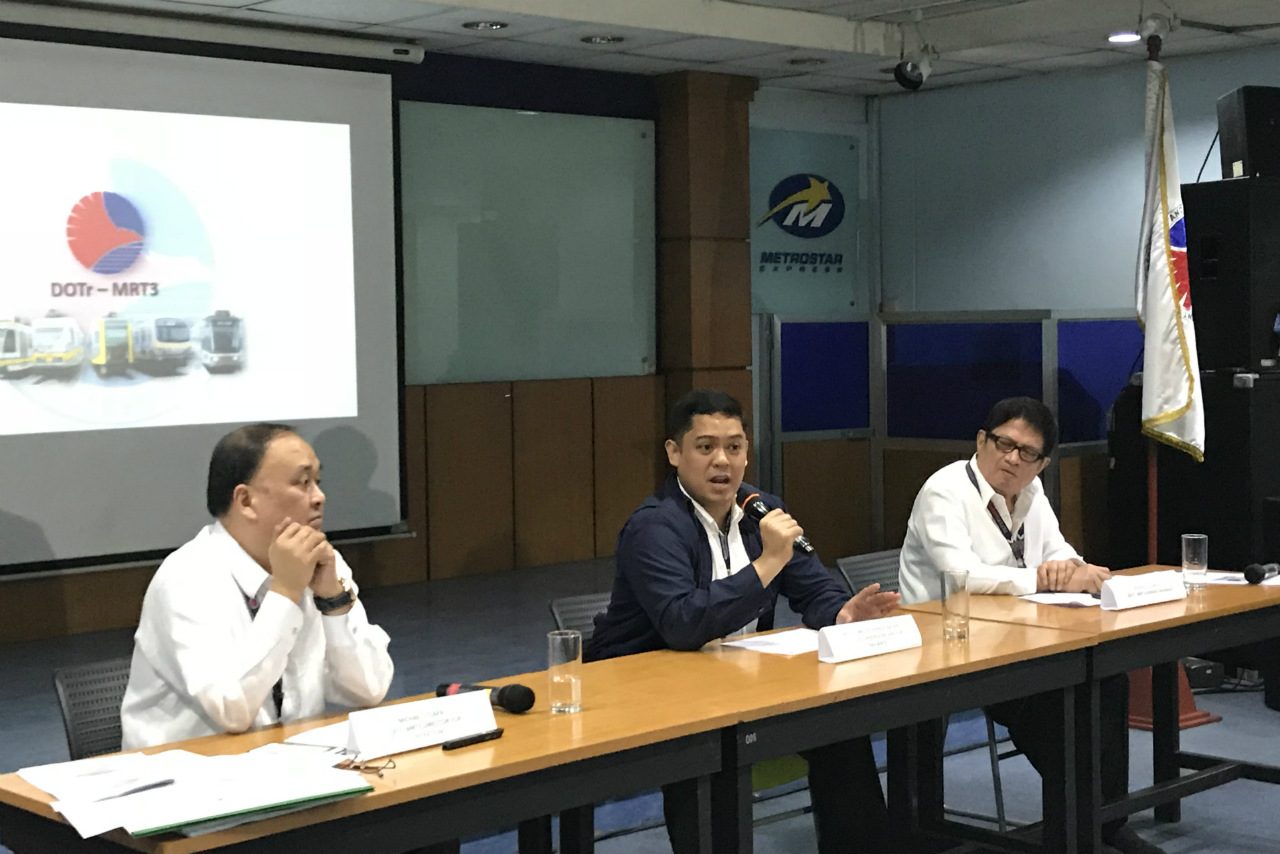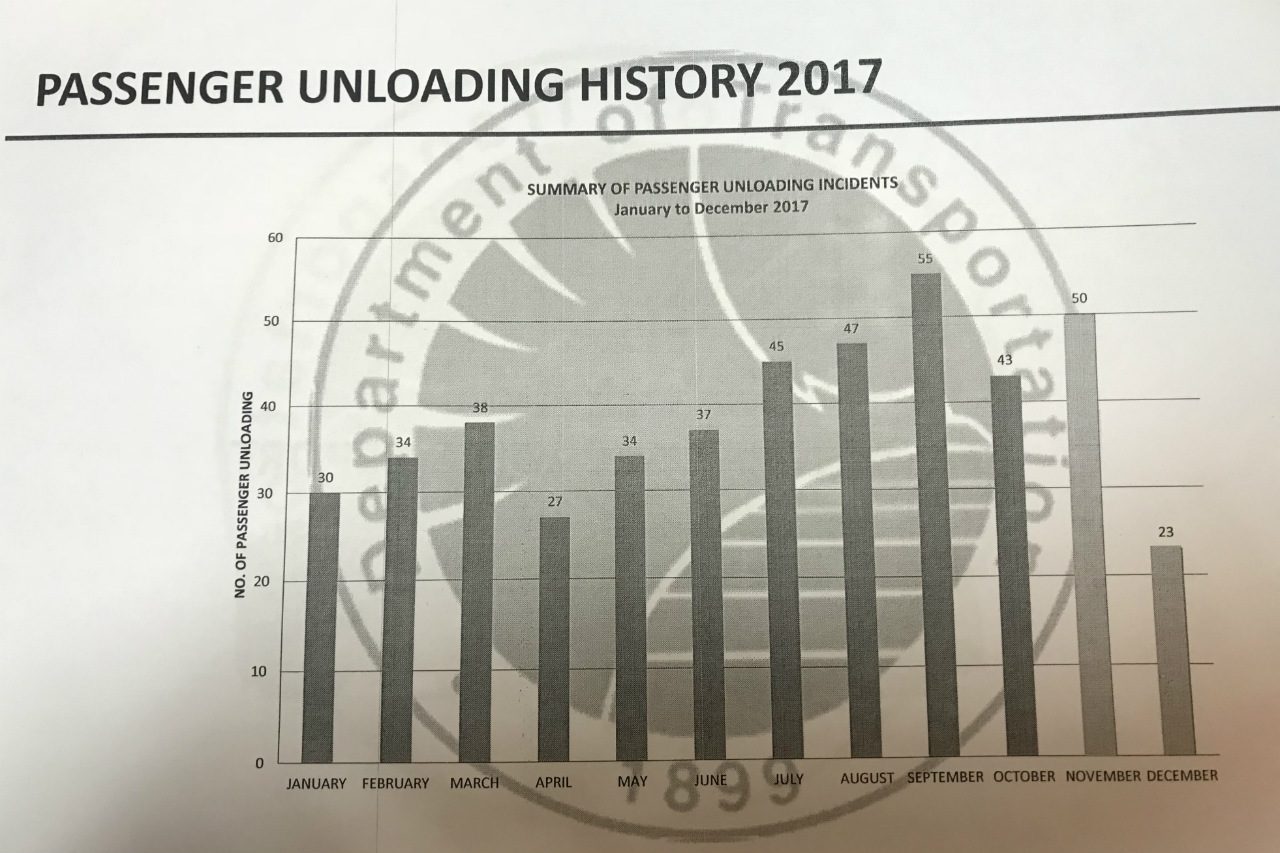SUMMARY
This is AI generated summarization, which may have errors. For context, always refer to the full article.

MANILA, Philippines – The Department of Transportation (DOTr) has promised to improve the Metro Rail Transit Line 3 (MRT3) services by the second quarter of 2018.
In a press briefing on Wednesday, January 10, DOTr OIC Undersecretary TJ Batan said spare parts needed to rehabilitate trains are expected to arrive in 30 to 60 days, while others will arrive with a lead time of at most 6 months.
He added that procurement of spare parts was based on the top causes of unloading incidents. Based on MRT3 data, problems with the traction motor, signaling system, and door failure account for most of the incidents recorded in 2017.
In the past week, Batan said, they were running on 13 to 14 trains per day – below the agency’s set minimum of 15 working trains per day. (READ: MRT woes: How often do they happen?)
“Right now, we still lack spare parts. We fix some of the trains, but there will be others that get broken, that’s why we average around 13 to 14 trains. At least we’re trying to hit the minimum at 15. We cannot allow a train to run that is not safe,” Batan said in Filipino.
During the Holy Week, MRT3 will suspend operations and implement general maintenance services on their trains from March 28 to 31. (READ: Surviving MRT3: Worst train fails in 2017)
MRT3 Director for Operations Mike Capati said this will give way to work on the train cars and install the spare parts needed to improve their services for the rest of the year.
Less breakdowns
According to the MRT3 management, there were less unloading incidents after they terminated the contract with Busan Universal Rail Incorporated (BURI) as maintenance provider in November.
Based on the MRT data, there were 39 breakdowns per month under BURI while there were 24 incidents under the Maintenance Transition Team. The MRT3 explained that the averages were calculated factoring in other variables by their engineers.

Commuter woes
Batan also addressed the issue of overloading in MRT3.
According to him, the trains are designed to fit in 1,182 people or roughly 8 persons per square-meter. “That’s a high capacity. Our trains can handle packed people inside the MRT,” he said.
The undersecretary also said that, after the upgrade, they are aiming to deploy 20 trains with 4 cars per day, running 60 kilometers per hour with a 3 minute headway in between, to address long lines.
In the meantime, Batan said that they are coordinating with other transport agencies to deploy buses that will help augment the long lines at the MRT3.
When asked how fares will be affected by the recently implemented tax reform law, Batan said that they will not increase fares until services of the railway system has been improved.
“Our commitment is that we will not increase fares until our commuters have not experienced a comfortable ride,” he said.
The MRT3 runs from North Avenue Station in Quezon City to Taft Avenue Station in Pasay City. In 2016, the railway system had 10.27 million passengers, up from the 9.85 million passengers recorded in 2015. – Rappler.com
Add a comment
How does this make you feel?
There are no comments yet. Add your comment to start the conversation.